Gurkhas are soldiers from Nepal.
Contents
Gurkha, Gorkha or Gorkhali may also refer to:
Gurkhas are soldiers from Nepal.
Gurkha, Gorkha or Gorkhali may also refer to:
The Gurkhas or Gorkhas, with the endonym Gorkhali, are soldiers native to the Indian subcontinent, chiefly residing within Nepal and some parts of North India.

The Anglo-Nepalese War, also known as the Gorkha War, was fought between the Gorkhali army of the Kingdom of Nepal and the forces of the British East India Company (EIC). Both sides had ambitious expansion plans for the mountainous north of the Indian subcontinent. The war ended with a British victory and the signing of the Treaty of Sugauli in 1816, which ceded some of the Nepalese-controlled territory to the EIC. The British war effort was led by the EIC against the Kingdom of Gorkha. Most of the Kingdom of Gorkha's war effort was led by the two Thapa families: the Thapa dynasty and the family of Amar Singh Thapa.

The Magars, also spelled Mangar and Mongar, are a Tibeto-Burman ethnic group native to Nepal and Northeast India, representing 6.9% of Nepal's total population according to the 2021 Nepal census. They are one of the main Gurkha tribes.

Gorkha National Liberation Front (GNLF) is a political party in the Darjeeling District of West Bengal, India. It was formed in 1980 by Subhash Ghisingh with the objective of demanding a Gorkhaland state within India.

The Gorkha Kingdom, also known as the Gorkha Confederation or the Gorkha Empire, was a member of the Chaubisi rajya, a confederation of 24 states, located at the intersection of Himalayas and the Indian subcontinent. In 1743, the kingdom began a campaign of military expansion, annexing several neighbors and becoming present-day Nepal.
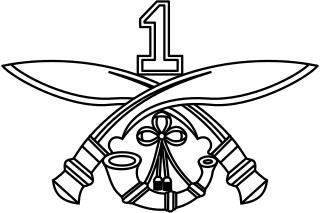
1st Gorkha Rifles (The Malaun Regiment), often referred to as the 1st Gorkha Rifles, or 1 GR in abbreviation, is the most senior Gorkha Infantry regiment of the Indian Army, comprising Gurkha soldiers of Indian Gorkha or Nepalese nationality, particularly from the Magars and Gurungs communities, who are hill tribes of Nepal. It was originally formed as part of the East India Company's Bengal Army in 1815, later adopting the title of the 1st King George V's Own Gurkha Rifles (The Malaun Regiment), however, in 1947, following the partition of India, it was transferred to the Indian Army and in 1950 when India became a Republic, it was redesignated as 1st Gorkha Rifles (The Malaun Regiment). The regiment has a long history and has participated in many conflicts, including many of the colonial conflicts prior to Indian independence, as well as the First and Second World Wars. Since 1947 the regiment has also participated in a number of campaigns against Pakistan in 1965 and 1971 as well as undertaking peacekeeping duties as part of the United Nations.
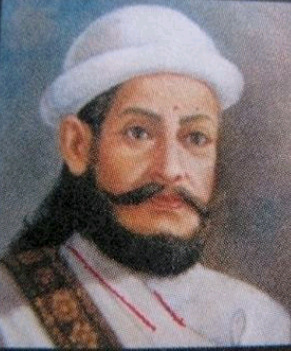
Amar Singh Thapa distinguished as Badakaji Amar Singh Thapa(Nepali: बडाकाजी अमर सिंह थापा), or Amar Singh Thapa The Elder, also known by the honorific name Bada Kaji or Budha Kaji, was a Gorkhali military general, governor and warlord in the Kingdom of Nepal. He was the overall commander of the Nepal Army in the conquest of Western Provinces and authoritative ruler of Kumaon, Garhwal in the Kingdom of Nepal. He was referred by the King of Nepal to have been deployed as Mukhtiyar of Western Provinces of Kumaon, Garhwal. He is often hailed as Living Tiger of Nepal and was posthumously regarded as one of the national heroes of Nepal, who led the Anglo-Nepalese War for the Gorkhali Army. Amarsingh Chowk Pokhara and Shree Amarsingh Model Higher Secondary School are named after Amar Singh Thapa.

The 11th Gorkha Rifles is a Gorkha regiment of the Indian Army that was re-raised after independence. The regiment consists of primarily the Kirant Tribes Rai, Limbu, Yakkha, Sunuwar of Eastern Nepal, Darjeeling, Kalimpong, Dooars of West Bengal, Sikkim and other parts of Northeast India. Though it is considered to be the youngest of the Gorkha regiments its lineage is as long as those of the 7th Gurkha Rifles and 10th Gurkha Rifles.

The 4th Gorkha Rifles or the Fourth Gorkha Rifles, abbreviated as 4 GR, is an infantry regiment of the Indian Army comprising Gurkha soldiers of Indian Gorkha or Nepalese nationality, especially Magars and Gurungs hill tribes of Nepal. The Fourth Gorkha Rifles has five infantry battalions. The regiment was raised in 1857 as part of the British Indian Army. In 1947, after India's independence, the Fourth Gurkha Rifles became part of the Indian Army as the Fourth Gorkha Rifles.
The Tripartite Agreement between the United Kingdom, India and Nepal is a treaty signed in 1947 concerning the rights of Gurkhas recruited in military services of United Kingdom and India. This agreement does not apply to Gurkhas employed in the Nepalese Army. Under the agreement, six of the ten Gurkha regiments remained as part of the Indian Army, while the remaining four joined the British Army. As of 2020, India has 39 Gorkha battalions serving in 7 Gorkha regiments. Those transferred to the British Army were posted to other remaining British colonies. In Malaya and Singapore, their presence was required in the Malayan Emergency, and they were to replace the Sikh unit in Singapore which reverted to the Indian Army on Indian independence. Those units in Malaya and Singapore, after these British colonies gained independence, are still part of Brunei and Singapore armed forces respectively.
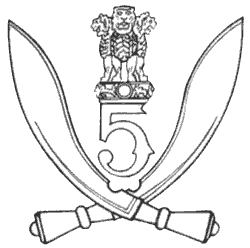
5th Gorkha Rifles, also abbreviated as 5 GR(FF) is an infantry regiment of the Indian Army comprising Gurkha soldiers of Nepalese origin. It was formed in 1858 as part of the British Indian Army. The regiment's battalions served in the First World War (Mesopotamia) and Second World War.

Chhetri, historically called Kshettriya or Kshetriya or Khas are Nepali speaking indo-aryans historically associated with the warrior class and administration, some of whom trace their origin to migration from medieval India. Chhetri was a caste of administrators, governors, warriors and military elites in the medieval Khas Kingdom and Gorkha Kingdom. The nobility of the Gorkha Kingdom mainly originated from Chhetri families. They also had a strong presence in civil administration affairs. The bulk of prime ministers of Nepal before the democratization of Nepal belonged to this caste as a result of the old Gorkhali aristocracy. Gorkha-based aristocratic Chhetri families included the Pande dynasty, the Basnyat dynasty, the Kunwar family and the Thapa dynasty. From 1806 to 1951, Chhetri prime ministers wielded absolute rule in the country and the monarchy was reduced to a powerless figurehead.

The Nepalese Army or Gorkha Army is the armed military Land warfare force of Nepal and a major component of the Military of Nepal.

At the time of Indian Independence in 1947, as per the terms of the Britain–India–Nepal Tripartite Agreement, six Gorkha regiments, formerly part of the British Indian Army, became part of the Indian Army and have served ever since. The troops are mainly from ethnic Gurkha communities of Nepal. A seventh Gorkha Rifles regiment was formally re-raised in the Indian Army after Independence to accommodate the dedicated Gorkha soldiers of the 7th Gurkha Rifles and the 10th Gurkha Rifles who chose not to transfer to the British Army.

The 8th Gorkha Rifles is a Gorkha regiment of the Indian Army. It was raised in 1824 as part of the British East India Company and later transferred to the British Indian Army after the Indian Rebellion of 1857. The regiment served in World War I and World War II, before being one of the six Gurkha regiments transferred to the Indian Army after independence in 1947. Since then it has served in a number of conflicts including the Sino-Indian War of 1962 and the Indo-Pakistan wars of 1965 and 1971. Today the 8th Gorkha Rifles is one of the most celebrated regiments of the Indian Army, having received numerous citations for bravery in the field of battle, and even producing one of the two field marshals of India, Field Marshal Sam Manekshaw, of the Indian Army.

The 9th Gorkha Rifles is a Gorkha infantry regiment of the Indian Army and, previously, the British Army. The regiment was initially formed by the British in 1817, and was one of the Gurkha regiments transferred to the Indian Army after independence as part of the tripartite agreement in 1947. This Gorkha regiment mainly recruits soldiers who come from Nepal's Gorkhali khas community i.e. the Chhetri and Thakuri clans and it was formed for only khas Chhetri and Thakuri. Domiciled Indian Gorkhas are also recruited, and they form about 20 percent of the regiment's total strength. The 9 Gorkha Rifles is one of the seven Gorkha regiments of the Indian Army. The other regiments are 1 GR, 3 GR, 4 GR, 5 GR (FF), 8 GR and 11 GR.
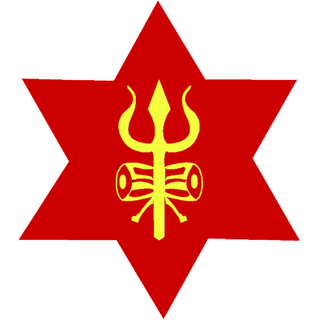
The Nepali Army, also referred to as the Gorkhali Army, is the land service branch of the Nepali Armed Forces. After the Gorkha Kingdom was founded in 1559, its army was established in 1560, and initially became known as the Gorkhali Army. Later it was known as the Royal Nepali Army (RNA) following the Unification of Nepal, when the Gorkha Kingdom expanded its territory to include the whole country, by conquering and annexing the other states in the region, resulting in the establishment of a single united Hindu monarchy over all of Nepal. It was officially renamed simply to the Nepali Army on 28 May 2008, upon the abolition of the 240-year-old Nepalese monarchy, and of the 449-year-old rule of the Shah dynasty, shortly after the Nepalese Civil War.

Indian Gorkhas, also known as Nepali Indians, are an Indian ethno-cultural group who speak Nepali as a common language. They inhabit mainly the states of Sikkim, West Bengal, Northeast India and Uttarakhand, including their diaspora elsewhere in India and abroad. The modern term "Indian Gorkha" is used to differentiate the Nepali language Speaking Indians from Nepalis.

Greater Nepal is an irredentist concept in Nepal, which claims current Indian and Bangladeshi territories beyond Nepal's present-day boundaries. These claims typically include the areas controlled by Nepal between 1791 and 1816, a period that ended with the Anglo-Nepalese War and the signing of Sugauli Treaty. In addition, extensive territories in the present-day Indian states of Uttarakhand, Himanchal Pradesh, Uttar Pradesh, Bihar, West Bengal and some parts of Bangladesh are also included in the claims of the activist organisation Greater Nepal Nationalist Front, which demands the "return" of these territories to Nepal. A map similar to theirs was displayed by the mayor of Kathmandu in his office in June 2023, in reaction to an alleged "Akhand Bharat" map in the Indian Parliament building.

The Nepal–Sikh war was a small conflict in 1809 between the forces of the Western Province of Kingdom of Nepal under General Amar Singh Thapa and the Sikh Empire under Maharaja Ranjit Singh.